
Learning how to perform Salah for females correctly is not only about following physical movements; rather, it is about connecting your heart and mind with Allah through every posture and recitation. Additionally, Salah is a spiritual act that combines intention (niyyah), proper purification (wudu), modest clothing, concentration (khushu), as well as the correct performance of each rak’ah.
Therefore, this guide is designed to walk you step-by-step through every aspect of Salah for women — including preparation, posture adjustments, recitations, Tashahhud, and supplications. Moreover, we will highlight common mistakes to avoid, helping you make your prayer more meaningful, focused, and ultimately, spiritually rewarding.
By mastering these steps, women can gain confidence in their worship, strengthen their relationship with Allah, and ensure that their Salah is performed in accordance with both scholarship and modesty.
Introduction – The Beauty and Significance of a Woman’s Salah
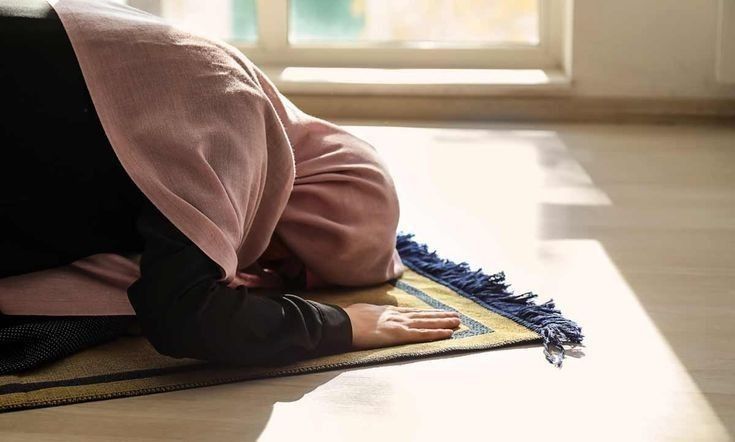
The beauty of a woman’s Salah shines in the way it becomes a peaceful sanctuary in the middle of a busy day. In fact, every prayer is a private moment to speak to Allah, seek comfort, and feel grounded in faith. Furthermore, since Salah is the second pillar of Islam, it creates a strong routine that keeps the heart focused on the Creator while also reminding every woman that she is seen, supported, and guided by Allah.
Allah says in the Quran:
إِنَّ ٱلصَّلَوٰةَ تَنْهَىٰ عَنِ ٱلْفَحْشَآءِ وَٱلْمُنكَرِ ۗ
“Indeed, prayer prohibits immorality and wrongdoing.”
(Surah Al-Ankabut 29:45)
Prayer brings spiritual fulfillment and practical benefits. It strengthens the heart with patience and hope, calms the mind when worries build up, and brings clarity to decisions. Even its movements offer gentle exercise that keeps the body active, aligned, and energized.
For every woman, preparing for Salah with modest clothing and sincere intention turns the act of prayer into something beautifully meaningful. Every step, every bow, and every Sujood becomes a reminder of humility, devotion, and closeness to Allah. Salah is not just a ritual. It is a lived experience that shapes character and builds a stronger connection with faith.
Why prayer is the heart of a Muslim woman’s faith
Salah is the center of a Muslim woman’s life because it keeps her heart firmly connected to Allah throughout the day. Additionally, each prayer is a moment to pause, breathe, and reset the soul — no matter how busy or stressful life gets. Through Salah, she renews her purpose, protects her values, and continues her journey with strength from Allah. Moreover, it fills her with calm during difficult emotions and, when challenges appear, it gives her hope and reassurance.
By being consistent with her Salah, a woman protects her faith, her peace, and the light in her heart.
The reward and tranquility Allah grants through Salah
Salah brings a special peace that only comes from standing before Allah. Every prayer brings reward, relief, and a renewed sense of purpose. Sujood especially offers a moment for the heart to let go of every burden and trust Allah fully. Even a short prayer can refresh the soul and add blessings to her day.
The more a woman commits to her Salah, the more tranquility, strength, and guidance flow into her life.
How to Perform Salah for Females – Step-by-Step Guide
Step 1 – Preparing for Salah (how to perform salah for females with purity, dress code, and privacy)
A woman’s Salah starts with proper preparation, both physically and spiritually. Getting ready for prayer with intention and modesty helps create the right mindset for worship and brings more serenity to the heart.
PURIFYING THE BODY AND CLOTHES
Before praying, make sure there is no najasa (actual filth) on your body, clothes, or the place of prayer. This includes things like blood, urine, feces, vomit, or pus. If there is any, it must be cleaned before beginning Salah.
Perform Wudu (ablution) to purify yourself. This is a key condition for the prayer to be valid.
You cleanse the hands, mouth, nose, face, arms, head, ears, and feet in the proper order.
MODEST DRESS CODE FOR WOMEN
A woman must be fully covered in Salah except for:
• The face
• The hands
• The feet (optional to uncover, but covering them is better due to scholarly differences)
The clothing should be loose and not sheer, so the hair, neck, and shape of the body do not show. Many women prefer to wear a prayer outfit (jilbab or khimar) that ensures proper coverage with ease.
Confirming the Prayer Time
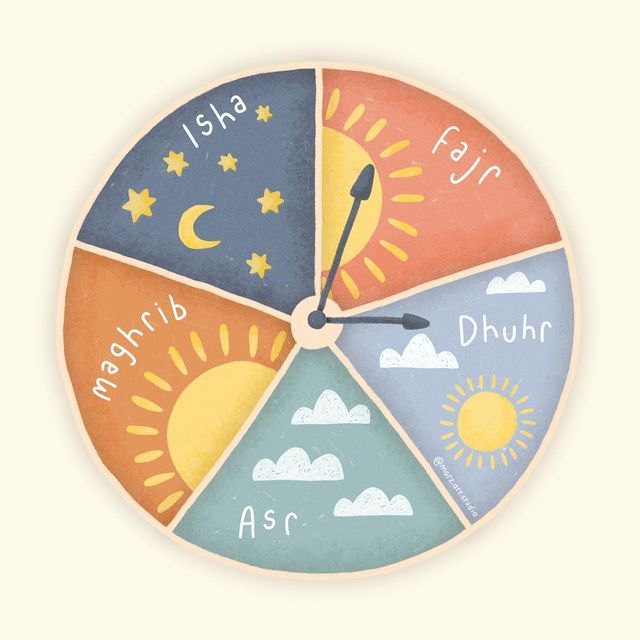
Each of the five daily prayers has a specific time window. Salah must be performed within its time for it to count.
So make sure the correct time has entered for:
Fajr – Dhuhr – Asr – Maghrib – Isha
FACING THE QIBLA
Stand facing the direction of the Kaaba in Mecca.
If you are unsure of the exact direction, you can check it easily here Find Qibla Direction
MAKING THE INTENTION (NIYYAH)
Intention is from the heart, not spoken out loud.
Think to yourself which prayer you are about to perform, such as Fajr or Maghrib.
If praying in congregation, include the intention of following the Imam.
There is no need to specify the number of Rak’ahs in your intention.
Once your heart is ready and focused, you are prepared to begin.
Step 2 – Making Wudu the Correct Way (how to perform salah for females starts with proper wudu)
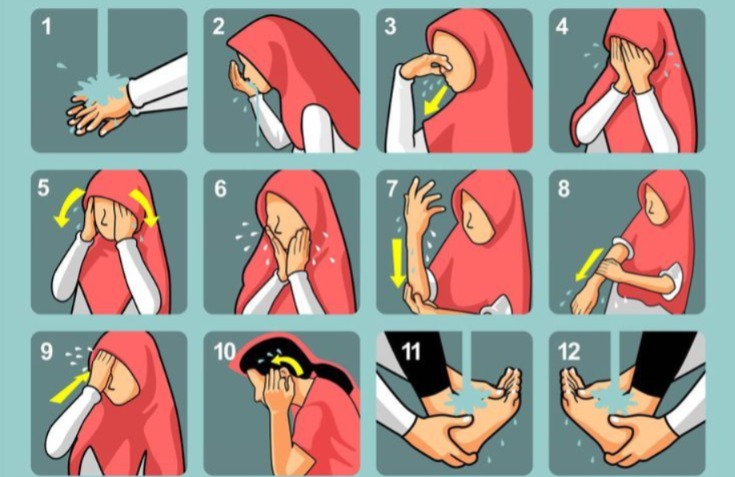
Before starting Salah, it’s essential to be in a state of purity by performing Wudu (ablution) correctly. Wudu cleanses the body and prepares the mind for focused prayer.
For a step-by-step guide on performing Wudu properly, check out our full blog post here
Once Wudu is complete, you are ready to begin the prayer with the right intention and mindset.
Step 3 – Standing (Qiyam) and Facing the Qiblah in how to perform salah for females
The standing position (Qiyam) is the first physical step of Salah. Here’s how a woman should perform it properly:
Stand Correctly
Stand upright with your feet close together, keeping your body relaxed but straight. Raise your hands to the level of your shoulders or ears, with palms facing the Qiblah and fingers naturally spread. Make sure your wrists and forearms are covered with your sleeves. This posture sets the foundation for a focused and dignified prayer.
Pronounce the Opening Takbir
Say “Allahu Akbar” (الله أكبَر) softly enough to hear yourself. The opening Takbir officially begins the prayer, signaling that all unrelated actions—like talking, eating, or drinking—must stop until the prayer is complete.
After the first Takbir, there’s no need to raise your hands again during normal prayers, except for:

- The Qunut in Witr prayer
- The extra Takbirat during Eid prayers
Position Your Hands
Place your right palm on top of your left, resting both hands on your chest. Do not clasp them, just let them gently rest. Keep your gaze lowered toward the place of prostration. This position helps maintain humility and concentration throughout the standing part of Salah.
Additional Tips for Women
- Ensure your clothing is loose and covers your body properly.
- Keep your movements gentle and mindful; avoid unnecessary gestures.
- Focus your heart on Allah, not on external surroundings, to increase khushu’ (concentration and devotion).
Standing in Qiyam is not just a posture—it’s the moment to center your heart, renew your intention, and begin your intimate conversation with Allah.
Step 4 – Reciting Surah Al-Fatiha and a short Surah properly in how to perform salah for females
After standing in Qiyam, a woman begins her prayer by reciting Surah Al-Fatiha:
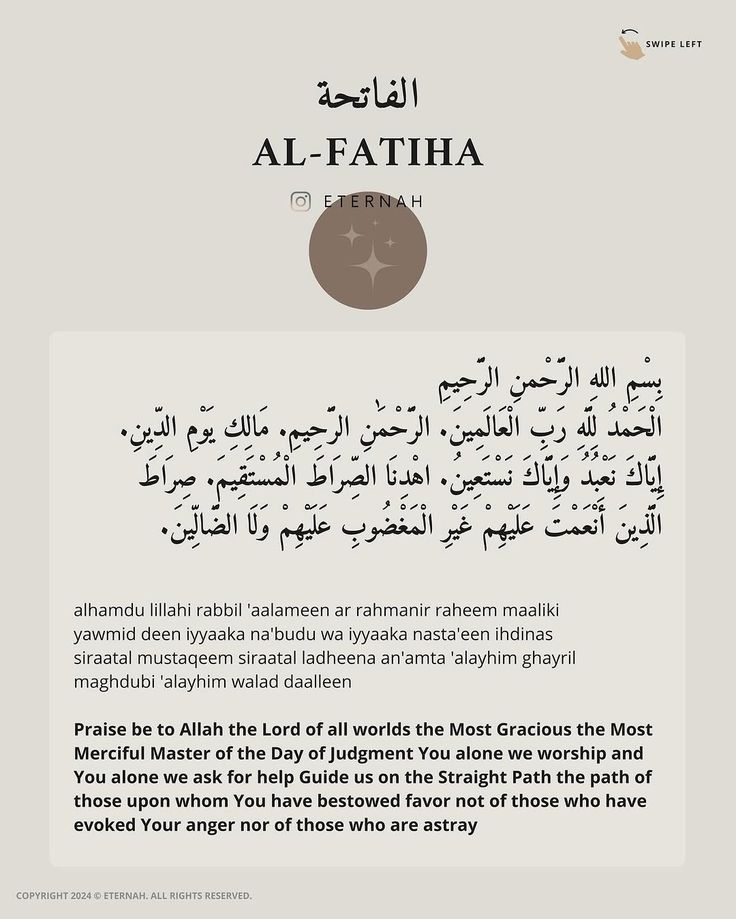
Then say Aameen softly:
Aameen
(Oh Allah, answer our prayer!)
After that, recite a short Surah such as Al-Ikhlas, Al-Falaq, Al-Nas, or a long verse like Ayat al-Kursi, depending on the number of Rak’ahs.
Step 5 – Ruku’ (Bowing) with modesty in how to perform salah for females

To enter the bowing position, say:
الله أَكْبَر
Allahu Akbar
(Allah is the Greatest)
Bend your upper body forward with your back straight, placing your hands on your knees. In Ruku’, say three times:
سُبْحَانَ رَبِّيَ الْعَظِيم
Subhaana rabbiyal-‘azheem
(Glory be to my Lord, the Most Great)
Maintain humility, focus, and modesty, keeping your clothing properly covering your body.
Step 6 – Standing After Ruku’
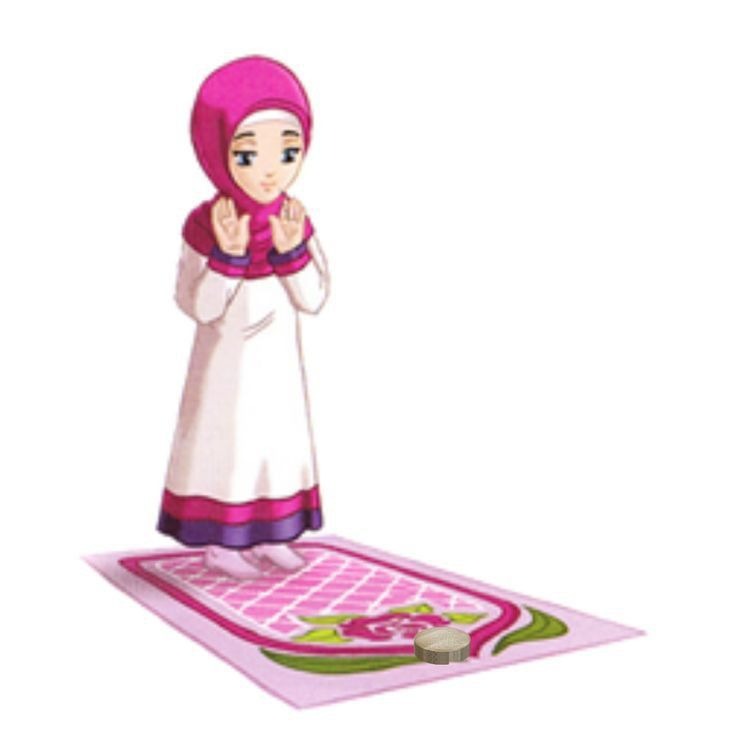
After bowing, rise to a standing position while saying:
سَمِعَ اللَّهُ لِمَنْ حَمِدَهُ
Sami‘a Allahu liman hamidah
(Allah listens to the one who praises Him)
- Stand straight with arms by your sides.
- Then say:
رَبَّنَا وَلَكَ الْحَمْد
Rabbanaa wa lakal-hamd
(Our Lord, to You belongs all praise)
This is an essential part of the Salah, completing the Ruku’ transition properly.
Step 7 – Sujood and Sitting posture for women in how to perform salah for females

Move into Sujood, saying:
الله أَكْبَر
Allahu Akbar
(Allah is the Greatest)
In Sujood:
- Touch your forehead and nose to the ground.
- Place both palms on the ground, fingers together.
- Keep both knees on the floor.
- Keep toes upright, not flat.
Say three times:
سُبْحَانَ رَبِّيَ الأَعْلَى
Subhaana rabbiyal-‘alaa
(Glory be to my Lord, the Most High)
Sit between the two prostrations and say:
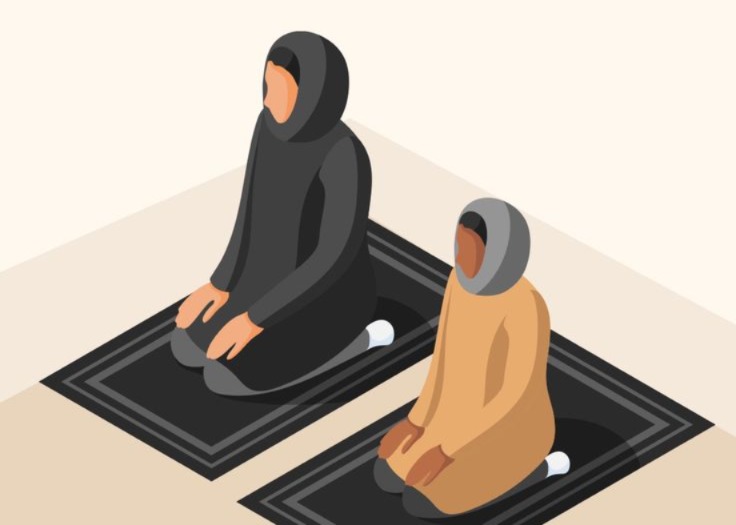
رَبِّ اغْفِرْ لِي
Rabbighfir li
(My Lord, forgive me)
Then perform the second Sujood in the same manner.
Step 8 – Final Tashahhud and Tasleem in how to perform salah for females
1. Partial Tashahhud (At-Tashahhud Al-Awwal)

- Recited after the 2nd rak’ah in prayers that have more than two rak’ahs (Dhuhr, Asr, Maghrib, Isha).
- It includes the opening part of the full Tashahhud, without sending Salawat on the Prophet ﷺ.
التَّحِيَّاتُ للهِ وَالصَّلَوَاتُ وَالطَّيِّبَاتُ، السَّلامُ عَلَيْكَ أَيُّهَا النَّبِيُّ وَرَحْمَةُ اللهِ وَبَرَكَاتُهُ، السَّلامُ عَلَيْنَا وَعَلَى عِبَادِ اللهِ الصَّالِحِينَ، أشْهَدُ أن لا إله إلا الله وحده لا شريك له، وأشهد أن محمدًا عبده ورسوله
Transliteration:
At-tahiyyaatu lillahi was-salawaatu wat-tayyibaat, assalaamu ‘alayka ayyuhan-nabiyyu wa rahmatullahi wa barakaatuhu, assalaamu ‘alayna wa ‘ala ‘ibaadillahis-saaliheen, ashhadu an laa ilaaha illallaahu wahdahu laa shareeka lahu, wa ashhadu anna Muhammadan ‘abduhoo wa rasooluhu
Meaning:
“All compliments, prayers, and pure words are due to Allah. Peace be upon you, O Prophet, and the mercy of Allah and His blessings. Peace be upon us and all of Allah’s righteous servants. I bear witness that there is no god but Allah alone, and I bear witness that Muhammad is His servant and Messenger.”
- Example: In Dhuhr, Asr, and Isha, after the 2nd rak’ah, you recite this partial Tashahhud, then continue to the 3rd and 4th rak’ah without reciting a small Surah in the 3rd and 4th (except for the obligatory Fatiha), and then recite the full Tashahhud in the last rak’ah.
- In Maghrib, after the 2nd rak’ah (which is the middle rak’ah of 3), recite the partial Tashahhud, then pray the 3rd rak’ah without reciting a small Surah, and then recite the full Tashahhud at the end.
2. Full Tashahhud (At-Tashahhud Al-Kamil)
- Recited in the final sitting of the prayer, after the last rak’ah.
- Includes sending Salawat on the Prophet ﷺ.
التحيات لله، والصلوات والطيبات، السلام عليك أيها النبي، ورحمة الله وبركاته، السلام علينا وعلى عباد الله الصالحين، أشهد أن لا إله إلا الله وحده لا شريك له، وأشهد أن محمدًا عبده ورسوله. اللهم صل على محمد، وعلى آل محمد، كما صليت على إبراهيم، وعلى آل إبراهيم، إنك حميد مجيد، اللهم بارك على محمد، وعلى آل محمد، كما باركت على إبراهيم، وعلى آل إبراهيم، إنك حميد مجيد
Transliteration:
At-tahiyyaatu lillahi was-salawaatu wat-tayyibaat, assalaamu ‘alayka ayyuhan-nabiyyu wa rahmatullahi wa barakaatuhu, assalaamu ‘alayna wa ‘ala ‘ibaadillahis-saaliheen, ashhadu an laa ilaaha illallaahu wahdahu laa shareeka lahu, wa ashhadu anna Muhammadan ‘abduhoo wa rasooluhu. Allahumma salli ‘ala Muhammad wa ‘ala aali Muhammad kama sallayta ‘ala Ibrahima wa ‘ala aali Ibrahima innaka hameedun majeed, Allahumma baarik ‘ala Muhammad wa ‘ala aali Muhammad kama baarakta ‘ala Ibrahima wa ‘ala aali Ibrahima innaka hameedun majeed
Meaning:
“All compliments, prayers, and pure words are due to Allah. Peace be upon you, O Prophet, and the mercy of Allah and His blessings. Peace be upon us and all of Allah’s righteous servants. I bear witness that there is no god but Allah alone, and I bear witness that Muhammad is His servant and Messenger. O Allah, send blessings upon Muhammad and the family of Muhammad as You sent blessings upon Ibrahim and the family of Ibrahim. Indeed, You are Praiseworthy, Glorious. O Allah, bless Muhammad and the family of Muhammad as You blessed Ibrahim and the family of Ibrahim. Indeed, You are Praiseworthy, Glorious.”
| Prayer | Partial Tashahhud | Full Tashahhud |
| Dhuhr | After 2nd rak’ah | After 4th rak’ah |
| Asr | After 2nd rak’ah | After 4th rak’ah |
| Maghrib | After 2nd rak’ah | After 3rd rak’ah |
| Isha | After 2nd rak’ah | After 4th rak’ah |
| Fajr | N/A | After 2nd rak’ah (only 2 rak’ahs) |
Key Differences in Salah for Females vs. Males
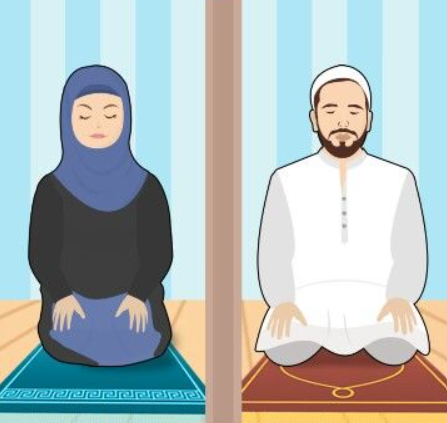
The basis of a woman’s Salah follows the same rulings as a man’s, but there are specific adjustments for modesty and comfort. These differences ensure that her prayer is fully valid while maintaining privacy and concealment of her body.
Adjustments in posture for modesty in how to perform salah for females
- Opening Takbir (Allahu Akbar):
- Women raise their hands to shoulder level, while men raise to ear level.
- She keeps her hands under her sleeves to avoid exposing her forearms.
- Standing (Qiyam) Position:
- Right palm rests on top of the left on the chest without clasping.
- Men place hands below the navel and clasp them together.
- Bowing (Ruku’):
- Woman bends slightly to touch her knees, while men fully straighten their back.
- Fingers are kept closed, palms on knees without grasping, and knees bent.
- Upper arms remain close to the body.
- Prostration (Sujood):
- Forearms rest on the ground; abdomen rests on thighs.
- Limbs are drawn close for maximum modesty.
- Toes do not remain upright like men.
- Sitting (Tashahhud):
- Woman sits in Tawarruk position: left buttock on the floor, knees bent, legs to the right.
- Hands rest on thighs with fingers closed.
Voice tone and recitation in how to perform salah for females
- Women do not recite aloud in audible prayers, unlike men in congregational prayers.
- When praying alone, a woman may recite at a volume where she can hear herself to ensure validity.
Praying in congregation or individually in how to perform salah for females
- Women stand behind men in mixed congregations.
- She is not obligated to lead prayer, give Adhan, or Iqama.
- Women’s group prayer is generally discouraged, and certain roles (like Adhan/Iqama) are considered sinful if performed by women.
Other Notable Differences
- Friday Prayer (Jumu’ah): Attending is optional; if performed, it counts as Dhuhr.
- Eid Prayer: Not obligatory for women.
- Fajr Prayer Timing: Women are recommended to pray at the earliest Fajr time rather than waiting for group prayer time.
- Clapping for Imam’s Forgetfulness: Women may lightly clap instead of saying SubhanAllah.
Common Mistakes Women Should Avoid During Salah
Performing Salah correctly is essential for it to be valid and spiritually rewarding. Women should pay attention to attire, movements, posture, and focus to avoid mistakes that may invalidate or reduce the reward of the prayer.
1. Attire Mistakes
- Wearing transparent or tight-fitting clothing: Clothing should be loose and opaque, covering the entire body except the face, hands and feet. Transparent clothing or clothing that reveals the color or shape of the body can invalidate the prayer.
- Uncovering the feet: During prayer, women’s feet are considered part of their awrah (private areas) and should be covered whenever possible.
- Praying in inappropriate places: Avoid praying in noisy or exposed areas where distractions or a lack of privacy may occur.
2. Movement and Posture Mistakes
- Rushing through the prayer: Going too quickly through Salah prevents proper focus and diminishes the spiritual benefit and reward. Each position—standing, bowing, prostration—should be performed with mindfulness.
- Incorrect Ruku’ (bowing): The back should remain straight, with the head in line with the back. Avoid slouching or over-bending.
- Incorrect Sujood (prostration): Ensure that the forehead, nose, palms, knees, and toes touch the ground properly. Raising feet or misaligning limbs reduces modesty and correctness.
- Improper sitting between prostrations: Sit upright between the two prostrations in the correct tawarruk posture.
- Incorrect hand and foot placement: Keep palms on the ground during prostration, fingers closed, and toes facing the Qiblah.
- Unnecessary movements: Avoid fidgeting, adjusting clothing excessively, or moving without purpose.
3. Focus and Recitation Mistakes
- Neglecting Khushū’ (focus and humility): Salah should be performed with the heart focused on Allah. Avoid looking around, daydreaming, or thinking about other matters during prayer.
- Incorrect recitation: Mispronouncing verses, skipping words, or reciting in the wrong order affects the validity of the prayer.
- Incorrect starting of prayer: The prayer should begin with the intention (niyyah) silently and the opening takbir, without adding extra words like “Allahumma Ameen” at the start.
- Not covering the Awrah properly: Ensure all parts of the body required to be covered are indeed covered, and clothing is not see-through or tight.
How to Maintain Khushu’ and Deep Connection in Salah

Salah is not only a physical act of worship but also a spiritual journey. Attaining Khushu’—concentration, humility, and attentiveness—is essential to make each prayer meaningful and spiritually fulfilling. Here’s how women can cultivate and maintain Khushu in their Salah:
Meaningful reflection on verses recited during how to perform salah for females
Understanding the meaning behind the words of Salah strengthens Khushu. When reciting Surah Al-Fatiha or other verses, take a moment to contemplate their significance. Reflect on the guidance, praise, and supplication contained in the recitations. This transforms prayer from a routine action to a heartfelt conversation with Allah.
- Tip: Learn the meaning of key Arabic phrases to feel more connected.
- Example: “Iyyaka na’budu wa iyyaka nasta’een” – “You alone we worship, and You alone we ask for help.”
Focusing on sincerity, not speed while practicing how to perform salah for females
Rushing through Salah diminishes its spiritual benefits. Each movement—from standing, bowing (ruku’), prostration (sujood), to sitting (tashahhud)—should be performed deliberately, with awareness of its purpose.
- Practical Tip: Imagine each prayer as your last prayer, fostering sincerity and presence of heart.
- Benefit: Performing Salah patiently increases the reward and deepens your spiritual connection.
Setting a quiet, distraction-free prayer space for how to perform salah for females
A clean and calm environment helps the mind focus entirely on Allah. Avoid noisy areas, clutter, or interruptions that can distract your attention.
- Tip: Sit quietly for a few minutes before prayer to mentally transition from daily activities to a state of readiness.
- Enhancement: Perform Wudu (ablution) mindfully, recognizing it as a spiritual preparation, which sets the tone for focused Salah.
Avoiding Spiritual Barriers
Maintaining Khushu also requires inner purity and mindfulness in daily life:
- Avoiding Sins and Haraam: Strive to avoid forbidden actions and seek forgiveness regularly to purify the heart.
- Presence of Heart: Don’t let worldly distractions linger; focus on the purpose and meaning of each prayer.
- Supplication: Ask Allah consistently to grant Khushu, as sincere du’a strengthens mindfulness and devotion.
Managing Common Challenges
Even with preparation, distractions and difficulties can arise:
- Distracting Thoughts: Gently return your focus to the prayer whenever your mind wanders, without self-criticism.
- Physical Discomfort: Ensure your posture is straight and comfortable; adjust before starting Salah.
- Language Barrier: Learn the meanings of Arabic phrases to enhance comprehension and connection.
By following these steps, women can cultivate Khushu in Salah, transforming their daily prayers into a profound spiritual experience. Concentration, humility, and attentiveness ensure that each prayer is not only valid but also deeply fulfilling.
Conclusion
Salah is not just a ritual; it is a source of spiritual strength, peace, and connection with Allah. Learning how to perform Salah for females the correct way ensures that every prayer is performed with proper posture, modesty, and Khushu, turning each rak’ah into a meaningful spiritual experience.
Even on busy days, staying consistent and focused in your prayers nurtures your faith and inner tranquility. Remember, Allah values your sincere effort more than perfection, so every step you take toward learning is rewarded.
Take the next step and learn the correct way to perform Salah with Areeb Academy’s female-led classes:
- Learn from highly qualified female teachers who are native Arabic speakers and fluent in English.
- Receive one-to-one sessions tailored to your pace and level.
- Master Salah, Qur’an recitation, and Islamic studies in a flexible schedule that fits your lifestyle.
- Gain confidence in performing every aspect of Salah properly, from Wudu to Tashahhud and du’as.
Start your journey today and experience a prayer routine that is correct, confident, and spiritually enriching. Join a Free Trial Session Now!
FAQs
Q1: Can women pray without covering their feet?
A: It is recommended to cover the feet during Salah, though some scholars allow leaving them uncovered. For maximum modesty, cover them with opaque clothing or socks.
Q2: How can I maintain Khushu in my prayer?
A: Focus your heart on Allah, avoid distractions, understand the meaning of the recitations, and perform each movement slowly and mindfully. Preparing with mindful wudu and a quiet prayer space also helps.
Q3: Do women recite aloud in congregational prayers?
A: Women recite silently in Salah, even when praying alone, the recitation should be audible to themselves to ensure validity.
Q4: What should I do if I make a mistake in prayer?
A: Minor mistakes do not invalidate the prayer if done unintentionally. Repeat the action or correct it and continue. Sincerity and effort are more important than perfection.
Q5: Should women attend Friday or Eid prayers?
A: Attending Friday prayer is not obligatory for women. Eid prayer is also optional, though performing it is rewarded. Women should pray in a separate area or behind men in mixed congregations.


